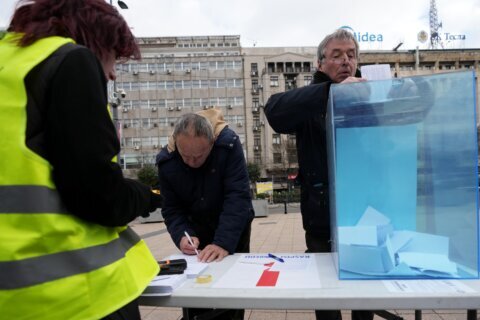The national teacher shortage existed long before the COVID-19 pandemic, and local school systems will soon see the effects of how a year of distance learning, severe public health restrictions and several starts and stops influence a person’s desire to become a teacher.
“When we look back to pre-pandemic, October 2019, our school divisions reported approximately 1,000 vacancies, and this is a number that steadily increased over the last decade,” said Charles Pyle, director of media relations with Virginia Department of Education.
And then came COVID-19.
“We have anecdotal information from other states that perhaps the pandemic has exacerbated teacher shortages, and the ability of school districts to hire qualified teachers, and there’s certainly no reason to think that this hasn’t had an impact here in Virginia,” said Pyle. “We should have some numbers on that impact, later in the spring.”
Asked why there is a teacher shortage: “Pay is one of those factors, not just in Virginia, but across the country,” said Pyle.
A recent list from the National Center for Education Statistics — part of the U.S. Dept. of Education — estimates the average salary for a public elementary school teacher in Virginia at $53,933, which is far below the national average of $63,645. The average teacher salary in Maryland is $73,444, and $79,350 in the District of Columbia.
Virginia lawmakers and Gov. Ralph Northam have been working toward a 5% raise for teachers.
Pyle said some people who would make great educators are already employed in other fields.
“What we’re trying to do in Virginia is make it easier to become a teacher, to make sure we’re not keeping people out of the pipeline, who have the potential of being successful teachers,” Pyle said.
As an example of how the state is lowering barriers to facilitate people becoming teachers, in the past, licensing requirements precluded some people from applying.
“We’re now administering those assessments at the end of the teacher preparation programs, so if there are some deficiencies, those could be addressed, rather than just keeping someone out who has the potential to be a successful teacher,” Pyle said.
With ever-changing social distancing guidelines and the early focus on distance learning, teachers and families have had to rely upon flexibility.
“It’s been an amazing thing to watch, to see how teachers across the state have adapted to these extraordinary circumstances,” Pyle said.
Since March 2020, and particularly during the 2020-2021 school year, all school systems in Northern Virginia gathered and implemented technology, and reworked lesson plans, to teach students at home.
“Some of this will continue beyond the pandemic, in terms of what we’ve learned about virtual learning, and how it can be done successfully,” Pyle said.
The lessons learned will provide Virginia teachers and families with an alternative to in-person learning, in rare circumstances.
“Certainly not for most of our students, but for some of our students, this has turned out to be a good fit,” said Pyle. “And I think it’s going to be something that’s going to be with us, moving forward beyond the pandemic.”
Teaching students at home and in-person — known as concurrent teaching — posed preparation and multi-tasking challenges for individual school systems that used the model.
While the ramifications of the pandemic on the teacher shortage will become clearer in coming weeks, Pyle said VDOE is aware of where the shortage is most profound.
“Each year we do what’s called a ‘critical shortage report.’ It’s required by the state legislature,” Pyle said. “We survey all 132 school divisions to see where they’re having the most difficulty in finding qualified teachers.”
In Virginia, Maryland and D.C., special education teachers top the list of hard-to-fill positions. “Special education has historically been a very challenging area,” Pyle said.
“What’s changed over the last 20 years is we now see elementary education as a shortage area — that’s our number two shortage,” Pyle said.
Pre-pandemic, VDOE’s top 10 shortages also included middle education, secondary mathematics (including Algebra I), career and technical education, secondary science, foreign language, secondary English, library media and secondary history and social science.








